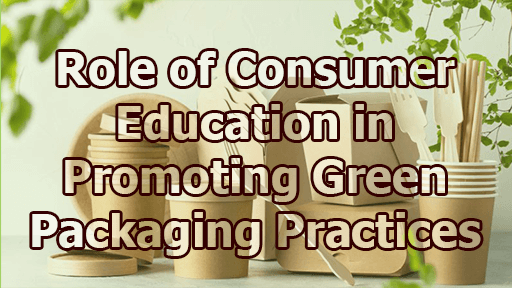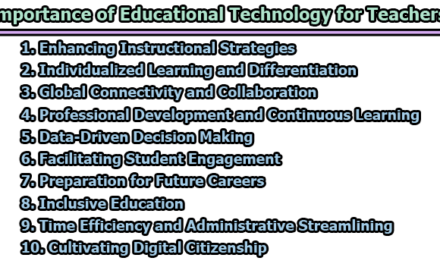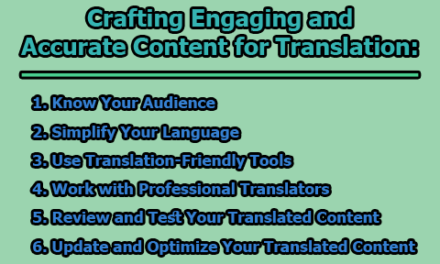Role of Consumer Education in Promoting Green Packaging Practices:
Packaging plays a crucial role in marketing and product delivery, serving as the bridge between a product and its consumers. In the modern world, packaging has evolved beyond its traditional function of protection and containment. It has become an integral part of marketing strategies and brand identity. However, as environmental concerns grow, the need for green packaging practices has never been more critical. In this article, we will explore the role of consumer education in promoting green packaging practices, the green concerns surrounding packaging, and strategies for implementing eco-friendly packaging.
The Environmental Context of Packaging:
Packaging has a significant impact on the environment, which extends beyond its role in protecting and delivering products. As noted by Briston and Neill in 1972, packaging can be defined as the means of ensuring the safe delivery of a product to the ultimate consumer in sound condition at a minimum overall cost. However, in the context of environmental responsibility, packaging must not only fulfill this role but also minimize its environmental footprint. In essence, it should “protect what it sells and sell what it protects.”
Green Concerns about Packaging:
Packaging has drawn increasing attention from environmental advocates and consumers alike due to several pressing issues:
1. Resource Consumption: One of the most prominent concerns regarding packaging is its substantial contribution to resource consumption. Packaging accounts for a substantial portion of energy, paper, and plastic consumption. A study published in the journal ‘Resources, Conservation, and Recycling’ notes that “packaging materials, including paper, plastics, and metals, are among the largest contributors to global resource use, with the packaging industry consuming vast amounts of raw materials and energy” (Eder, 2019). This overconsumption of resources has far-reaching environmental implications, including deforestation for paper production and increased greenhouse gas emissions associated with the production of plastic packaging materials.
2. Low Recycling Rates: Despite widespread labeling of packages as recyclable, the reality is that only a small proportion of these materials actually get recycled. The Environmental Protection Agency (EPA) in the United States reports that “only about 9% of plastics are recycled, and 16% of all plastic packaging gets recycled” (EPA, 2021). This low recycling rate is a result of various factors, including inadequate infrastructure for recycling, lack of consumer awareness, and challenges in separating and processing different types of packaging materials. The failure to effectively recycle packaging materials contributes to excessive waste generation and the depletion of natural resources.
3. Information and Labeling: Consumers often rely on labels to make informed choices about environmentally friendly products. However, there is inadequate control over the labeling of “green” products, which has raised concerns about false environmental claims made by manufacturers. A report by the Federal Trade Commission (FTC) in the United States highlights the challenges in ensuring truthful environmental marketing claims. The report states that “consumers are often misled by vague or unsubstantiated claims of environmental benefits” (FTC, 2012). Such misleading claims not only lead to consumer confusion but also erode trust in genuinely eco-friendly products.
4. Waste: Over-packaging, inefficient design, and a focus on disposability contribute to excessive waste generation, particularly in developed countries. Inefficient packaging design leads to the use of more materials than necessary, resulting in larger volumes of waste. The concept of “just-in-case” packaging, where excess packaging is used to prevent damage during transportation, exacerbates this issue. A report by the Ellen MacArthur Foundation on ‘The New Plastics Economy’ (2016) highlights the need to shift from the current linear model of packaging, characterized by “take-make-dispose,” to a more circular approach that emphasizes reuse and recycling to minimize waste.
5. Litter: Discarded packaging, such as fast food containers and beverage bottles, contributes significantly to litter, which poses both a local and global environmental concern. Locally, litter is unsightly and can harm wildlife. On a larger scale, it adds to the growing problem of plastic pollution in oceans and waterways. A study published in ‘Science Advances’ (Jambeck et al., 2015) estimates that “8 million metric tons of plastic waste enter the oceans annually.” This not only harms marine ecosystems but also affects human health through the consumption of seafood contaminated with microplastics.
Implementing Green Packaging Strategies:
To address these environmental concerns, businesses can adopt various green packaging strategies:
a. Removal: One effective approach to reduce the environmental impact of packaging is to eliminate unnecessary layers. This strategy not only minimizes waste but also reduces resource consumption. A study published in the ‘Journal of Cleaner Production’ (Ferreira et al., 2016) emphasizes the importance of “designing products with reduced packaging” as a key element of eco-design.
b. Reduction: Optimizing packaging materials and design is fundamental to reducing environmental impact. Businesses can implement reduction strategies by selling products in larger unit sizes, offering refills, using efficient design forms, and reducing the thickness of packaging materials. Research in the ‘International Journal of Advanced Manufacturing Technology’ (Kumar et al., 2018) highlights the role of “packaging material optimization” in reducing resource consumption.
c. Reuse: Designing packaging for reusability is a sustainable approach that minimizes waste. Traditional glass beverage bottles are a classic example of reusable packaging. By adopting similar practices, businesses can reduce the need for single-use packaging materials. A report by the Sustainable Packaging Coalition (SPC) discusses the benefits of “reusable packaging systems” in reducing environmental impact (SPC, 2019).
d. Recycling: Promoting recycling is a critical aspect of green packaging. Businesses can use materials that are easily recyclable, support the recycling industry, and invest in recycling processes. A publication in ‘Resources, Conservation and Recycling’ (Lopes Silva et al., 2020) underscores the importance of “closed-loop recycling systems” as a means to reduce waste and conserve resources.
e. Biodegradability: Utilizing eco-friendly materials, such as biodegradable plastics based on sugar and corn, is a strategy gaining traction. These materials break down naturally in soil, reducing the long-term environmental impact of packaging. A research article in ‘Frontiers in Microbiology’ (Urbanek et al., 2020) explores the potential of “biodegradable polymers” in mitigating plastic pollution.
f. Technological Developments: Investing in innovative packaging technologies can significantly improve the eco-performance of packaging. These advancements may include the development of materials that are more sustainable, such as plant-based plastics or bio-based alternatives. A study in the ‘Journal of Industrial Ecology’ (Meng et al., 2019) highlights the role of “eco-innovations in packaging” as a means to enhance sustainability.
Designing Green Packaging:
Designing green packaging involves thoughtful consideration of environmental impacts. Here are some key principles:
i. Choose Environmentally Friendly Materials: The selection of materials is paramount in green packaging design. Opt for materials that minimize environmental harm and are easily recyclable. Sustainable materials like cardboard, glass, and certain types of plastics with a low environmental footprint are preferable choices. A study in the ‘Journal of Cleaner Production’ (Muthu et al., 2016) underscores the significance of “material selection” in eco-design.
ii. Avoid Harmful Chemicals: Ensure that both packaging materials and any chemicals used in the packaging do not cause environmental damage. This includes avoiding substances that can leach into the environment or harm ecosystems. Compliance with regulations like the Restriction of Hazardous Substances Directive (RoHS) and Registration, Evaluation, Authorization, and Restriction of Chemicals (REACH) is critical.
iii. Compliance with Environmental Laws: Adhering to environmental regulations in target markets is essential. It not only demonstrates corporate responsibility but also reduces production and disposal costs. Companies must navigate complex legal frameworks related to packaging, such as Extended Producer Responsibility (EPR) laws, to ensure compliance (European Commission, 2021).
iv. Concentrated Products: Developing concentrated products that require smaller packaging is an effective strategy to minimize the environmental impact of packaging. Concentrated products often use less material and require less energy for transportation. A report by the American Cleaning Institute highlights the role of “ultra-concentrated products” in reducing packaging waste (ACI, 2021).
v. Minimize Excess Packaging: Adopt a minimalist approach to packaging design by using only the necessary materials. This reduces waste and minimizes the environmental footprint of packaging. The Ellen MacArthur Foundation emphasizes the importance of “eliminating unnecessary packaging” in transitioning to a circular economy (Ellen MacArthur Foundation, 2016).
vi. Reclaimed Materials: Incorporate reclaimed materials into packaging to support the recycling industry. Using recycled content in packaging materials reduces the demand for virgin resources and encourages a circular economy. Research in ‘Waste Management’ (Li et al., 2018) discusses the benefits of “reclaimed paper” in sustainable packaging.
vii. Resource-Efficient Reclamation: Support resource-efficient reclamation schemes to ensure that materials used in packaging are responsibly sourced and efficiently reclaimed. Collaborating with suppliers and participating in responsible sourcing initiatives can contribute to sustainability efforts.
viii. Pollution Consideration: Address pollution concerns throughout the packaging lifecycle, including manufacturing and post-consumer waste. Implementing pollution prevention measures and responsible waste disposal practices are crucial.
ix. Encourage Efficient Use: Design packaging to encourage efficient use, reuse, or disposal. Consider innovative packaging designs that promote portion control or prolong product shelf life, reducing the need for additional packaging.
x. Consumer Education: Provide consumers with information and educational materials about green packaging. Transparency about the environmental benefits of packaging choices empowers consumers to make eco-conscious decisions. Consumer education initiatives can include labels, website information, and eco-friendly packaging symbols.
xi. Training: Ensure that designers, marketers, and advertisers are well-trained in green packaging principles. Educating your team on sustainable packaging practices ensures that eco-friendly design considerations are integrated into every stage of product development and promotion.
In conclusion, consumer education plays a pivotal role in promoting green packaging practices. As environmental concerns surrounding packaging continue to grow, businesses must adopt strategies to minimize their environmental footprint. By following green packaging strategies and designing packaging with environmental considerations in mind, companies can reduce waste, conserve resources, and contribute to a more sustainable future while satisfying consumer demand for eco-friendly products.
References:
- American Cleaning Institute (ACI). (2021). The Future of Cleaning: Ultra Concentrated Products.
- Packaging management written by Briston, J. H. (John Herbert), and Neill, Terence J. Published by Gower Press, Epping, 1972. ISBN 10: 0716101467 / ISBN 13: 9780716101468.
- Eder, P. (2019). The Environmental Impact of Packaging. Resources, Conservation and Recycling, 141, 159-160.
- Environmental Protection Agency (EPA). (2021). Plastics: Material-Specific Data. Retrieved from https://www.epa.gov/facts-and-figures-about-materials-waste-and-recycling/plastics-material-specific-data
- Ellen MacArthur Foundation. (2016). The New Plastics Economy: Rethinking the Future of Plastics. Retrieved from https://www.ellenmacarthurfoundation.org/publications/the-new-plastics-economy-rethinking-the-future-of-plastics
- European Commission. (2021). Environment – Packaging and Packaging Waste.
- Federal Trade Commission (FTC). (2012). Green Guides: Summary of the Federal Trade Commission’s Environmental Marketing Guidelines.
- Ferreira, L. J., António, J. M., & Pinto, J. L. (2016). Eco-design of packaging: trends and challenges. Journal of Cleaner Production, 115, 3-16.
- Jambeck, J. R., Geyer, R., Wilcox, C., Siegler, T. R., Perryman, M., Andrady, A., … & Law, K. L. (2015). Plastic waste inputs from land into the ocean. Science Advances, 1(10), e1500445.
- Kumar, S., Luthra, S., Mangla, S. K., Papadopoulos, T., & Garg, D. (2018). Evaluating the barriers in the implementation of green supply chain management: An ISM approach. International Journal of Advanced Manufacturing Technology, 96(9-12), 3733-3750.
- Li, Y., Song, X., & Tang, P. (2018). Influence of reclaimed paper on the mechanical and barrier properties of paperboard for packaging. Waste Management, 77, 297-304.
- Lopes Silva, D. A., Ferreira, G. M., da Cruz, R. S., & de Aguiar, J. L. B. (2020). Closed-loop recycling systems: An approach for the sustainability of plastic packaging industry. Resources, Conservation and Recycling, 155, 104668.
- Meng, Y., Shen, L., Zhang, Y., & Zhu, Q. (2019). Green packaging adoption in the context of eco-innovation: The mediating role of environmental and economic performance. Journal of Industrial Ecology, 23(3), 677-688.
- Muthu, S. S., Li, Y., & Hu, J. Y. (2016). A review of sustainable materials for environmental packaging. Journal of Cleaner Production, 128, 175-186.
- Sustainable Packaging Coalition (SPC). (2019). Design for Reuse: The Path to a Circular Economy.
- Urbanek, A. K., Rymowicz, W., & Mirończuk, A. M. (2020). Degradation of plastics and plastic-degrading bacteria in cold marine habitats. Frontiers in Microbiology, 11, 585072.

Assistant Teacher at Zinzira Pir Mohammad Pilot School and College










